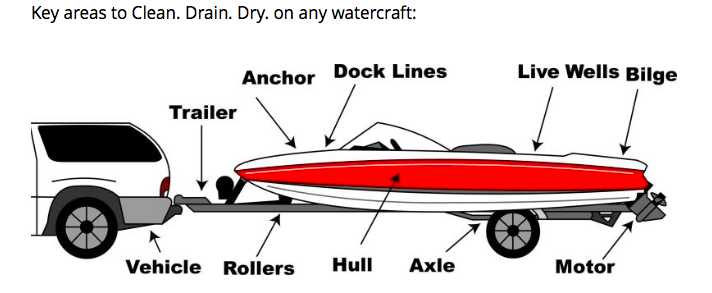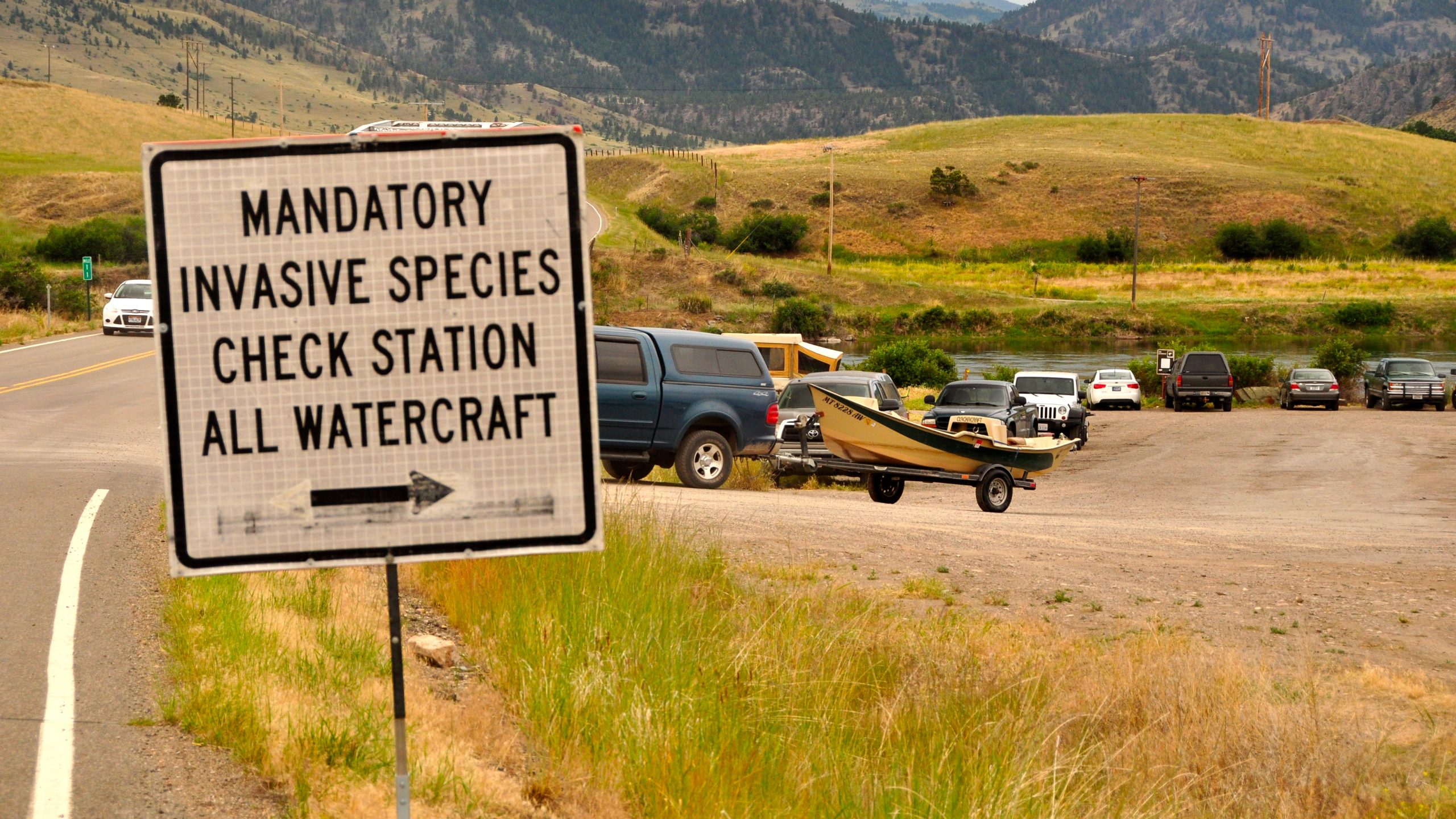[vc_row][vc_column][vc_column_text]
Aquatic Nuisance Species Reminder
Before moving to a new body of water you must wash your boat, waders, boots, or anything that may carry Aquatic Nuisance Species.
This has become habit for many in the last several years with the increased education regarding evil parasites and such that can creep into our recreational waters. For some the Yellowstone PKD disaster will remind us that it is very real. ANS is a real thing and can damage families, businesses, farming, water supply movement, even the food we eat. It is far reaching and very dangerous.
So the 10 minutes that it takes to scrub your boat down with soap and water is not too bad at all. Certainly considering the damage that it can cause. Catastrophic damage to resources.
Check out the Montana AIS, Aquatic Invasive Species, site for more info. It is worth the couple minutes to educate yourself further. ANS and AIS are both used in this context depending on who is speaking about it. Same thing.
We have a boat wash station at Headhunters here in Craig. We have since we opened. Any an all welcome to wash their hard sider, raft, pontoon boat, tube, or water wings here at the shop 24/7. Stop in anytime and get that craft clean!
A short video this Sunday to get your boat washing juices flowing! You can do this with a Coors Light in hand. Or nearby.
[/vc_column_text][/vc_column][/vc_row][vc_row][vc_column][vc_video link=”https://www.youtube.com/watch?v=8lEcDnLDpz8″][/vc_column][/vc_row]
Clean all of the weeds of your craft. Dry out those leaky dry bins. Open and let them dry. Hot water while washing is not a terrible idea either. I know that we may not always get that opportunity, but when you can they do suggest it.

Boaters, Anglers, Paddlers, and Seaplane Pilots
CLEAN
Completely remove all mud, water, and vegetation before leaving the access area.
Inspect your boat, trailer, and all gear. Pay attention to crevices and hidden areas.
Remove all vegetation (by hand or sprayer).
Remove all mud (use a pressurized power sprayer, found at most do-it-yourself car washes). The hot water kills organisms and the pressure removes mud and vegetation. No need to use chemicals or soap.
Dispose of debris in trash or on dry land away from water or ramp.
DRAIN
Drain all water from watercraft and equipment.
Drain or remove water from boat, bilge, live well, engine, internal compartments, and bait buckets by removing drain plugs before leaving the access area.
DRY
Aquatic invaders can survive only in water and wet areas.
Dry your watercraft and fishing equipment thoroughly; this will kill most invasive species. The longer you keep your watercraft, trailer, waders, and other equipment outside in the hot sun between fishing trips, the better.

Thanks for the timely and valuable info posted the last 2 days. As always, Headhunters is ahead of the pack when it comes to blog topics and stewardship of the Mo.
Please join me in forwarding to the FWP by whatever means any info or useful suggestions that could be useful in resolving the PKD situation as quickly as possible.
I’m no biologist but, as in the case of whirling disease, I feel the parasite was probably introduced by anglers wearing contaminated gear or using contaminated boats or vehicles. I spoke to two great folks in the first week of August who had fished the Bighorn Madison Yellowstone and Missouri in the nine days previous and we’re headed home that evening after nine days of Montana fishing vacation. I’m pretty sure the didn’t wear different wading gear at each stop probably didn’t decontaminate between locations either. Just a husband and wife on a whirlwind dream vacation. Pretty sure they were only two of a thousand similar anglers.
Thanks to FWP for diagnosing the cause of the fish kill so quickly. I think that halting access to the whole drainage immediately was a good initial response too. But I suggest to them that they use the fishing pros in the area to supply fish samples to the investigation and their observations and sightings of more dead fish locations would greatly speed up the search for the source boundaries of the contamination. Since the symptoms of infected fish are known, using the fish landed by anglers which exhibit symptoms taken from the entirety of the river and tributaries would speed the task exponentially and allow biologists to move from isolating to resolving the crisis. Tagged brown trout studies have revealed spawners which have traveled up Yellowstone tributaries in excess of 40 miles from the main river and the closing off of angling isn’t going to stop the migration of these possibly infected fish ( nor the spawning of whitefish, the focus species. )
In this way, the guides outfitters and shops could salvage at least a part of their income for the next three months, perhaps saving a business or two for the season and even seasons to come. Bet reservations for next year came to a screeching halt!
One other note to FWP- why not begin random sampling of all major streams both east and west of the divide? There is no evidence of fish kills on the Mo, but that doesn’t mean the parasite hasn’t been introduced and consequences loom in the future. This info could save currently unsuspected rivers from crisis- a preemptive move?
Thanks for your efforts guys and thanks for letting me blog-hog
Thanks Russ J. Well said and you bring up some worthy points for sure. The pre-emptive sampling of other regional resources would be huge. We’ll pass that one on to all we know.
Appreciate the comment Russ!
Perhaps time to start up the Headhunters Bikini Boat Wash again.
Word. Love that idea!
Kudos to your shop for providing a public boat cleaning station.
Maybe outfitters could start requiring clients to wear shop gear? I know it doesn’t do anything about The DIY folks, but it might be a start.
And again, thanks for doing your part to help with and promote this issue.
Like your thought process Bill. Keep thinking and always remind us of solid ideas.